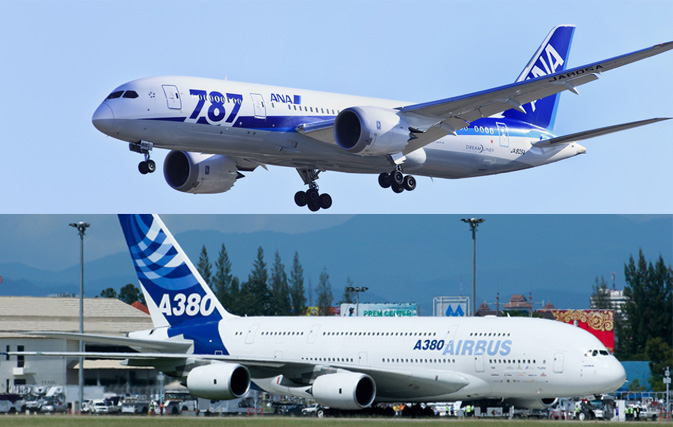PARIS — Just eight miles from the centre of Paris, the normally sleepy aerodrome in Le Bourget will undergo its biennial transformation into the centre of the world’s $700 billion aerospace and defence industry when it hosts the 51st International Paris Air Show next week.
The world’s oldest airshow was first held barely five years after the Wright brothers’ famous flight off Kitty Hawk, North Carolina. It brings together over 300,000 trade and general visitors for a weeklong extravaganza where the roar of fighter jets overhead mixes with the clink of champagne glasses as executives from the world’s leading airlines and aircraft manufacturers sign deals that can top $100 billion.
Here are five things to look out for at this year’s show, opening to industry professionals Monday and to the public on June 19:
1. ORDERS RACE
Airbus and Boeing will face off in an unofficial but still closely watched competition for contracts between the European and American plane makers. Demand is being driven by airlines eager for new-generation, energy-efficient planes _ although the recent steep drop in the price of oil may impact upon that calculation.
At the Farnborough International Airshow last year, European jet maker Airbus clinched orders and commitments for 486 aircraft valued at $75 billion. Boeing said it secured business worth $40.2 billion for 201 airplanes. It was the second year in a row Airbus beat Boeing.
Analysts at brokerage Canaccord Genuity predict firm orders of around 300 aircraft will be signed by the two companies in total — a relatively low figure compared to recent years when demand was driven by new aircraft introductions. Both major manufacturers have set modest expectations for new orders this year.
Airbus’ 20-year outlook is for 31,350 new passenger aircraft and freighters worth $4.6 trillion, while Boeing’s equivalent forecast is for 36,770 aircraft worth $5.2 trillion.
2. WIDE BODIES
Airbus’ wide-body A350 was the star of the last Paris Air Show when it made its first flight in 2013. This year Boeing has dominated the wide-body market, notably with its 787 plane, with 152 new orders to Airbus’ 27, according to IHS Aerospace analyst Ben Moores.
“While Airbus has a strong wide-body backlog, they do need to be able to demonstrate a couple of strong wide-body orders from mature stable markets to close the gap that has opened up in 2015,” Moores said.
Both big manufacturers’ order books are being doped by insatiable demand for single-aisle jets like Airbus’ A320neo and Boeing’s 737 MAX.
3. FUEL PRICE
In recent weeks airlines from budget carrier Ryanair to Middle East behemoth Emirates have all posted earnings that have been boosted by falling oil prices, which have cut fuel bills.
The drop was a full 36 per cent for American carrier United Airlines, which said fuel costs fell below labour costs as its largest expense in the first quarter.
This is expected to drive aftermarket demand for older aircraft, which become more affordable to run when fuel costs drop.
Canaccord Genuity says the fact that this hasn’t happened “is one of the key questions on the sector today.”
4. HIGH-TECH
In the absence of major new aircraft demonstrations that have drawn attention to past shows, the focus at Bourget this year may turn more than usual on the whiz-bang technology presentations put on by some of the 2,000-plus exhibitors from around the world.
Among the head-turning items announced so far is armaments maker MBDA’s High Power Laser demonstrator and the six-nation Meteor, an air-to-air missile to enter service later this year that its manufacturer promotes as having “No Escape Zone.”
The European Space Agency will have presentations on its Rosetta program, the first spacecraft to orbit and land on a comet. It will also present its “IXV” Intermediate Experimental Vehicle _ a space plane that was launched into orbit and returned to Earth earlier this year.
5. CSERIES
Canadian aircraft maker Bombardier will make one of the show’s biggest unveilings when it gives the world premiere of its $5.4 billion CSeries program. Analysts say the project is a big risk and cost for the Montreal-based company.
The CS100 and CS300 on display are single-aisle planes designed to carry up to 149 people.
Bombardier, the world’s third-largest maker of civilian commercial aircraft, has said it hopes to capture half the global market of the 100-to-149-seat planes, and has marketed the CSeries plane as being 20 per cent more fuel-efficient than the comparable Airbus A320 and Boeing 737 family of aircraft.
The CSeries is critical to Bombardier Aerospace, which has spent years designing the advanced-technology jet, but has faced development delays and what the company called “an engine-related incident” on one of the aircraft during ground maintenance testing last year.
